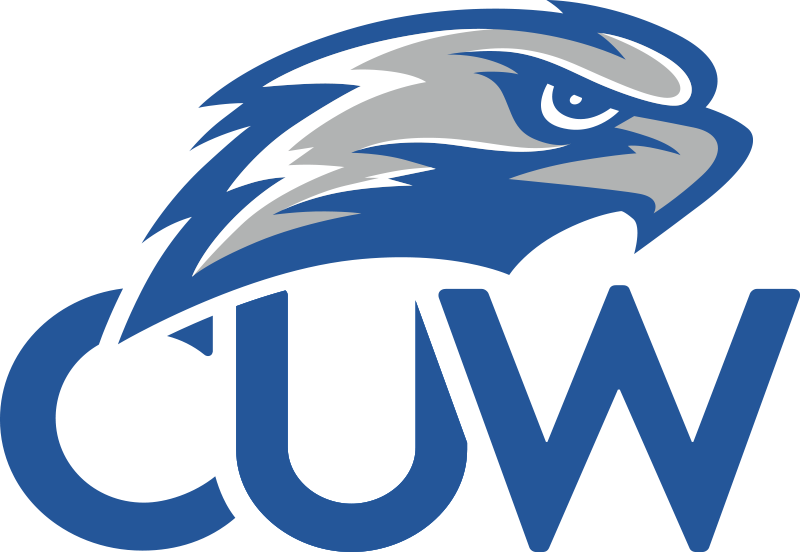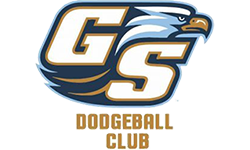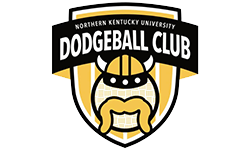I made a post in the NCDA Capt Club Facebook group asking for the leaders of the teams to pose any questions they may have regarding the NCDA, dodgeball, or me personally. This was just a way to get some fresh content on the NCDA site. So let’s see what they came up with:
- Hunter Ford (VCU) asks, “Boxers or briefs?”
- Boxer briefs
- Kevin Bailey (GVSU-alumni) asks, “Your overall record vs Grand Rapids Dynasty [Elite Dodgeball team]?”
- On the court, 2-12
- On social media, undefeated
- Kevin Bailey asks, “Celeb crush?”
- Yvonne Strahovski
- Kevin Bailey asks, “Chipotle or Qdoba”
- Chipotle, if I had to choose between these two. My overall ranking of burrito places is Moe’s, Hot Head, Chipotle, Taco Bell, Taco John’s, any dumpster, Qdoba.
- Kevin Bailey asks, “If you had the choice between stabbing yourself in the eye, or having Wesley Peters as a teammate, which eye would you stab?”
- Left
- Kevin Bailey asks, “If you could change one thing in the NCDA rule book, what would it be?”
- Everyone has to wear a shock collar and if they’re being a turd, the ref can give them a jolt. But if we’re trying to be realistic, I think it would be cool to see what 25-foot throw lines look like.
- Kevin Bailey asks, “What program do you use for all your subpar photoshopping?”
- SnapChat is my go-to, but I’ll use PowerPoint if I want to put a lot of detail into it.
- Kevin Bailey asks, “When are we officially switching to the new ranking system that I proposed last year?”
- As soon as I get the deliverables I asked for on it during the December eBoard Meeting. I need an updated write-up, a comparison to our current model, and a sustainable program to run it.
- Peter Broe (GVSU and CMU Alumni, WMU Current) asks, “How many, if any, girls have you kissed?”
- I don’t know. It seems pretty serial-killery to keep track.
- Jeff Starr (OSU) asks, “How has the game changed since you started in the NCDA?”
- When I started playing in the Fall of 2008 there was almost no depth in the NCDA. You were either a bad team, or you were GVSU. GVSU was on something like a 3-year undefeated streak and another streak of not losing a single point in over 12 months. I heard one GV player say “there’s been at least one Laker on the court since 2007” or something to that effect. Now, most teams that have been around for at least one season have at least a couple players that can pinch-throw or turn some heads with their catching ability. That isn’t to say there weren’t good teams for their time back then, but SVSU and OSU were pretty much the “middle tier”. They were good, just not great.
- The opening rush was also very different. Back then it was 10 balls on the half-court line and balls were not live until they had been cleared at the baseline. This was dangerous, you had twenty people rushing very quickly and slamming their hips, shoulders, and legs against the opponent’s body as they were attempting to do the same. It was a good day when this was changed.
- The early days of the NCDA were also kind of like the Wild West. No one really followed the rules as far as who actually was a student and how many people they had on their roster, but only the top tier teams really were watched closely on that. For instance, I know the year before I started at WKU, the team was made up of 7 people who actually went to WKU and the rest were just friends who happened to be free that weekend. Community College students would play for their feeder schools, people at universities that didn’t have programs would play for teams that did, and schools would join forces to create one team under a single name. The worst case of this was when University of Louisville pulled 4 kids (14-15 years old) from a local high school in Bowling Green to play at a tournament at WKU. Three of those kids ended up playing at WKU years later. In 2009, BGSU had to drop from a tournament, but their captain at the time still wanted to play, so she joined Miami’s team for the weekend. At Nationals 2010, WKU brought like 26 players because our captain at the time either didn’t know about the roster cap, or didn’t care; either way, no one said anything. People were able to get away with things like that though because no one really knew each other, we didn’t have feature length articles telling everyone about every player in the NCDA, the captains sort of knew each other’s names and their avatar on the beloved NCDA-Forum, but that’s about it.
- Jeff Starr asks, “underrated player/team?”
- Team? Miami. I’m interested to see how their Spring semester goes.
- Player? CJ Johnson (Kent). I’m very impressed with his play style every time I see it. Super energetic and accurate with the ball.
- Jeff Starr asks, “Best Dodgeball memory?”
- In game, beating SVSU in OT at JMU’s the Beast II in 2013. It was the first time (and still may be the only time) WKU had beaten a Michigan school. Winning in OT after having to rally from a 1-8 player deficit in the last point of regulation was incredible, plus it was equally nice being able to say it was the year after they won Nationals 2012. I’m only disappointed that there isn’t film of that game. We have the first and part of the second point on YouTube, but the JMU staff made us take down our camera since it was on the suspended track above the court. That first point though is a thing of beauty; without any biases, it is one of the most cohesive points of dodgeball I’ve ever seen any team play. Everything was perfect.
- Off the court, meeting my soon-to-be-wife at a Kent Dodgeball party following the ODC (which WKU was invited to) in my last semester of graduate school in the spring of 2014.
- Jeff Starr asks, “Where would you like to see the NCDA in 5 years?”
- I’d love to see us in 100 schools across the United States with conference championships and a 16-Team Nationals that is sponsored/televised. Also, it would be great if every game could have a paid staff of trained officials.
- Kyle FitzPatrick (Kent alumni) asks, “which organizations have the best and worst track record for turning in paperwork / payments?”
- Best, from my experience is UWP.
- Worst, from my experience is any team that’s been around for at least two full years, has a new leader, and doesn’t know how to use social media to it’s full advantage. It seems to be a different school every year.
- Tanner Obermeier (UNL) asks, “How much is the league expected to grow in the next season?”
- If Leski keeps up the good work he’s done over the last 19 months, I’d say we could easily add another 10 schools to the NCDA in the next year.
- Hunter Ford asks, “How long do you foresee your tenure being as league president?”
- According to the NCDA Bylaws a member of the Executive Board may only serve two consecutive terms in the same position on the Board. Since I was elected in 2015 and against in 2017 to back-to-back two-year terms, my reign as President ends on June 30, 2019. I would love to continue serving the NCDA as a member of the Executive Board past that, but if there are better candidates out there, I will gladly bow out to them. I’m currently also serving as Board Treasurer of USA Dodgeball until October 31, 2021.
- Jude DuPart (OSU Alumni) asks, “what long term goals do you foresee for the NCDA in the coming years?”
- Everything I mentioned in Hunter’s question a few rows up, plus I’d love to be able to have full time employees of the NCDA that can really focus on developing the sport of dodgeball at the collegiate level. I doubt we will ever be able to become an NCAA sport because of Title IX regulations, but that would also be pretty cool. We’re about 20 years from that though.
- Mike McNicholas (DePaul Alumni) asks, “Why does Felix smell?”
- I’m too busy answering dodgeball questions to shower properly.
- Jacob Leski (CMU Alumni) asks, “Who are some of the individuals in your opinion that have had the greatest impact on the growth of our league and seeing it go? (Other than yourself)”
- There are three tiers to this in my opinion: the foundation, the structure, the finish.
- The Foundation (2004-2010) are the three people I believe made it possible for the next group of people to shape the NCDA. These individuals are Aleks Bomis (MSU), Josh Raymer (WKU), and Ben Murphy (Delta/SVSU). Aleks basically created the Midwest Dodgeball Conference which he would later turn into the NCDA, along with our first rulebook and hosted the first Nationals. Josh Raymer and Ben Murphy did a lot as far as building the NCDA’s website, forum, and Facebook presence in the beginning, thus helping recruit new teams and keeping us all organized.
- The Structure (2011-2014) are the three who helped set “the standard” for what the NCDA is today. These are Zigmas Maloni, Chris Hess, and the 2011-2012 Kent Team. Zig has put more work into this organization than anyone else, myself included. If there’s anything that’s been done for this league, Zig has either lead it or been a part of it. He’s a gift from the Luxembourgian (or Lithuanian, I can’t ever remember) gods. Chris Hess started the club at JMU and helped develop not only his team, but the entire east coast region VERY quickly. Chris’s hard work helped the East Coast schools not only retain membership by ensuring there would be solid competition, but thrive in the NCDA as well. The 2011-2012 Kent team is on this list because, by the leadership of Kyle FitzPatrick and Ryan Menn, they set out on a quest to break the NCDA’s ranking system at the time (the Champ/NHL system) by playing as many games as the possibly could including inducting all three of the new East Coast schools (JMU, Towson, and UMD). This not only made the NCDA rethink its ranking system, but it also helped more teams play more games (28) than anyone had at that point in the league’s history, which challenged teams the following year to play more than they had in the past. They also did this without any funding from their university, thus showing how dedicated they were. It paid off too, for Nationals 2012 all four Michigan schools were on the same side of the bracket, thus eliminating each other very early before the first non-Michigan vs Michigan Championship game since Nationals 2008 (GVSU 9-1 OSU).
- The finish (2015-Present) are those who are currently working to take the sport to the next level. These are Jacob Leski, Kevin Bailey, and USA Dodgeball. Leski has recruited and helped retain more teams in the NCDA than anyone else. His persistence and hard work has helped 11 new teams join our family since the beginning of the 2017 season. Kevin Bailey has done great work in keeping our content fresh and our social media accounts actively engaged, thus making us more attractive to the non-Dodgeball community. Also, he’s a fun person to make fun of for (almost) no reason. USA Dodgeball is uniting all Dodgeball in the United States under one organization, thus allowing for the growth and development of the sport so we can take it to the next level.
- Josh Raymer (WKU Alumni) asks, “Will we ever get married IRL?”
- You leave your wife and I’ll leave mine. You just say the word!
- Peter Broe asks, “What does Marcellus Wallace look like?”
- Ving Rhames
- Mike McNicholas asks, “In your opinion, and the opinion of the board as a whole, should more yellow and red cards be given to players who act like children and throw fits/temper tantrums and yell at refs? Also, why is the answer to that question yes?
- Yes, I do believe yellow and red cards should be used more frequently. It’s a great tool for officials to have to ensure they are the ones in control of the game. In the hierarchy of game, refs are at the top, then captains, then players at the bottom. This is important because without this hierarchy the officials can lose control over the game very quickly. Players should naturally strive to be respectful human beings, but I know with their hormones racing they can get out of hand which is why it is important for officials to be able to card a player. Being carded in a game is the last thing a player should want because a yellow card means you’re out for the point and you can’t be subbed out which forces your team to play a player-down until the end of the point. A red card means you’re out for the rest of the game and your team must play a player-down for the rest of the game. Getting to the point where you’re out of control enough to deserve a card is selfish because it puts your team at a disadvantage.
- Peter Broe asks, “who would probably have gotten the most cards over their time in the NCDA and why is it Wes Peters?”
- Wes may be a front runner, but I also remember Drew Greenawalt (UK) receiving quite a few over his career. Cody Putnam (SVSU) volunteered his hat in the ring claiming to have received a few in his time too. Those are the only three I can really think of that have blantantly received multiple cards. Unfortunately our card reporting is still underdeveloped in the NCDA.
- Mike McNicholas asks, “Do you wipe front-to-back or back-to-front?”
- …I don’t like this question. I don’t want to give away all my secrets. But I can tell you there’s only one correct way to do it. The other ways seem very unsanitary.
- Grant Webber asks, “What’s the difference between this year’s CMU team and last year’s CMU team considering the talent and experience that was lost?
- I’ve only seen CMU at one tournament this year so far, but it honestly looks like they’re more calm and in control this year on the court. Last year there was SO much talent and ego on the court that there was a lack of leadership. Too many cooks in the kitchen. With an entire team of captains or people who want to stand out, players will make mistakes because everyone is trying to be the hero. For the 5 people on the team last year that weren’t trying to be heroes, there was so much pressure on them to not make a mistake that they were essentially doomed to fail. From what I’ve seen this year, the CMU side of the court was much more controlled. Those who can make solo plays were making solo plays, those who work together well were doing that, and those who are there for support are doing that as well, and with the lack of intrateam/on-court arguing those developing players are more confident. There are always going to be individuals who aim to be the hero, and that’s totally fine, but when you have 75% of your team doing it, it’s a recipe for failure without control/structure. Just my opinion though, I could be WAY off.
- Rebecca Shappell (MSU) asks, “In what ways do you feel the smaller percentage of female players in the NCDA has/can impact the league and its expansion?”
- There have been many teams over the course of my time in the NCDA who have had strong female leaders that their teams can not only respect, but support. I hope I’m not missing anyone, but from memory those teams are: UWP, NSULA, DePaul, MSU, BGSU, Kent, Pitt, PSU, and Towson. Having strong female leadership is great because it attracts more women to play, which is great for inclusion and development. When a club has more members, their retention rates will skyrocket. When clubs become a boys-club it could potentially cause issues with egos and childish behavior, sometimes having women on the court can calm the men down, which again helps with retention and development. No one wants to stay in a stressful environment where they can’t grow as a player because of constant bickering. Also, some of the dedicated female players from the NCDA have also gone on to do very well in Elite Dodgeball or other post-college leagues.

























